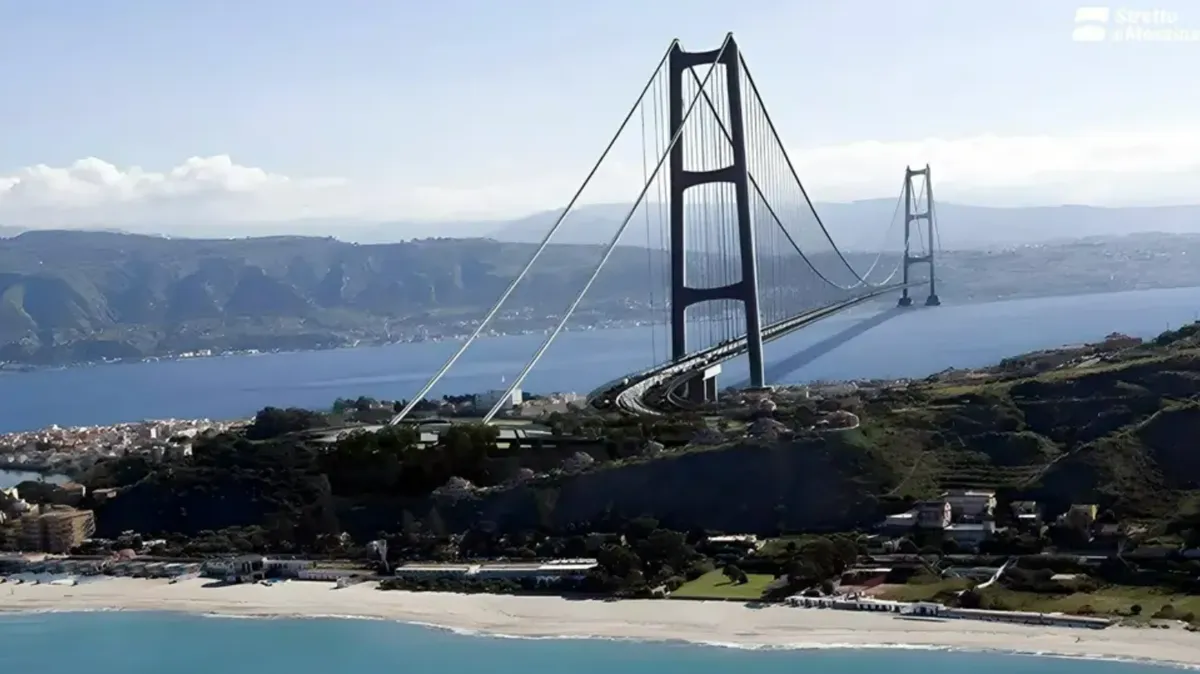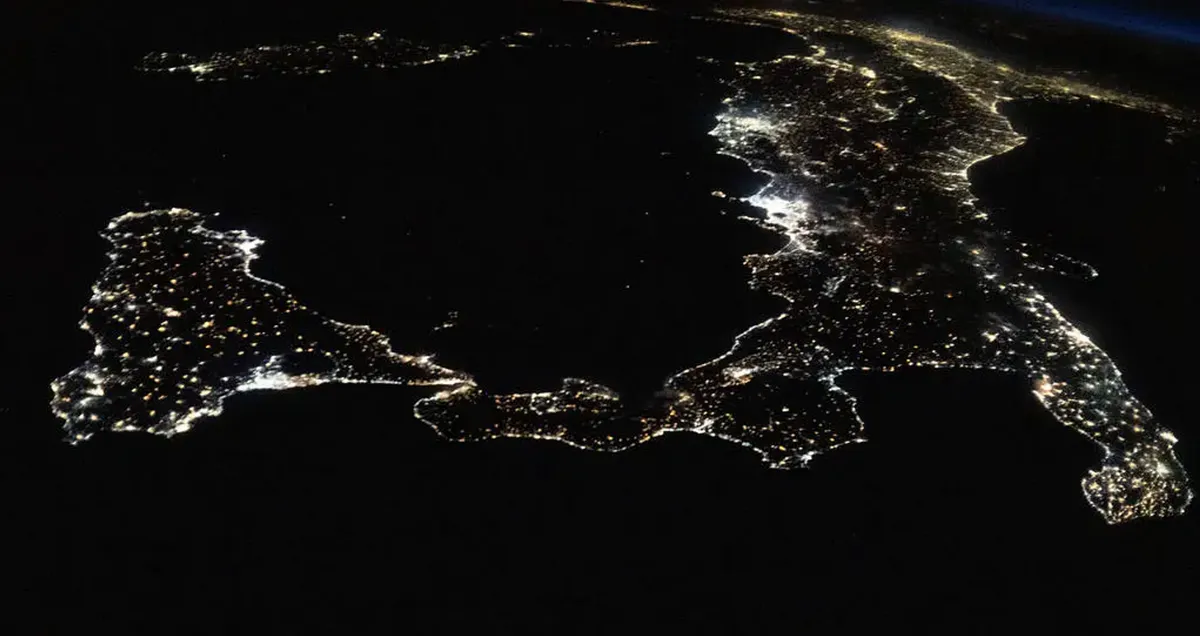
Posted on 08/12/2025 12:42:01 PM PDT by Red Badger

A concept design of the Strait of Messina Bridge (Ponte Stretto Messina) between Sicily and mainland Italy. Image credit: WeBuild Group
=================================================================
Italy's long-standing dream to build the world’s longest suspension bridge between the mainland and the island of Sicily has just moved one step closer to becoming reality.
On August 6, the Italian government gave its final approval to build the Strait of Messina Bridge (Ponte sullo Stretto di Messina) between Sicily to the southern region of Calabria on the tip of Italy's boot.
Costing an estimated €13.5 billion ($15.8 billion), the bridge is planned to stretch 3,300 meters (10,827 feet) across the strait, supported by two 399-meter (1,309-foot) tall towers.
Suspension bridges like this use cables hung from these towers to carry the weight of the roadway. The load is transferred from the deck through the cables to the towers, which then distribute the forces down into the ground, allowing the bridge to span long distances without the need for too many supports in the water.
The bridge is set to have three traffic lanes in each direction, including an emergency lane, two service lanes, and two rail tracks with sidewalks. Along with the bridge itself, the project also involves constructing an integrated infrastructure network, featuring 40 kilometers (25 miles) of new roads and rail lines, three underground train stations, about ten viaducts, and multiple tunnels.
Italy's Transport Minister Matteo Salvini, one of the project’s big political backers, has reportedly dubbed it “the biggest infrastructure project in the West.”
“Today, Italy has shown once again how it can come together around a mega project that will be transformative for the whole country,” Pietro Salini, Chief Executive of Webuild, the Italian engineering company tasked with the job, said in a statement.
“The Bridge will bring about a great infrastructure project spread out across many work sites contemporaneously. It will stimulate growth, employment and lawfulness across southern Italy. The project will be fitted with the most advanced technologies for safety and maintenance,” he added.

An astronaut onboard the International Space Station took this picture of Italy and its island of Sicily while cruising over the Mediterranean Sea. Image credit: ISS/NASA
===============================================================
If and when completed, it will be significantly longer than that of the world’s current longest suspension bridge, the 2,023-meter (6,637-foot) long 1915 Çanakkale Bridge that connects the European and Asian continents within Turkey.
The “if and when” of building a bridge across the Strait of Messina has long been a point of debate. Discussions about such a crossing literally date back to ancient times. Nearly 2,000 years ago, a famed Roman scholar called Pliny the Elder recounted a story of a temporary bridge built to transport war elephants captured from Carthage in 251 BCE. While this is almost certainly a legend, the idea has endured through the centuries.
The notion resurfaced in the 1860s during Italy’s unification and continued to captivate politicians well into the late 20th century. In the current era of right-wing populism, the project has been revived once more, promoted as a catalyst to stimulate Southern Italy, which remains considerably less developed than the north.
Many remain unconvinced. Local opposition groups and thousands of protestors have voiced a range of concerns, from environmental and aesthetic impacts to arguments that the funds could be better spent elsewhere. Some cost-benefit analysis indicates the megaproject may never regain enough revenue to offset its multibillion-euro price tag. It’s estimated that over 440 properties on both sides of the bridge will need to be expropriated, a controversial move currently being challenged in the courts.
Even without politics getting in the way, building a suspension bridge of this scale poses significant engineering challenges. The Strait of Messina is known for strong winds, seismic activity, and deep waters, all of which complicate construction and long-term stability. Engineers will need to ensure the structure can withstand earthquakes, which aren't unheard of in the region, while addressing corrosion from the salty marine environment.
Despite these awkward hurdles, the government in Rome seems determined to realize a vision centuries in the making.
I too have Sicilians in my family tree. The 1908 disaster convinced them to come to America.
I think its referring to the suspension part of the Italian bridge. Bridges are often part suspension and other types of engineering combined.
“Pensacola here has a 3 mile bridge and there’s a 7 mile bridge in the Keys...........”
Neither have two-mile suspensions.
I’m still waiting for the bridge from California to Hawaii. That would be a fun drive!
The Verrazzano Narrow bridge is 2.59 miles long.
There are strong tidal currents that create whirlpools in the straight.
“My big concern if I was engineering it would be Sicily’s motion with respect to the mainland. The motion of the African plate causes it to move significantly every year. I don’t know how you engineer a bridge to handle that.”
Not significant.
The suspended portion (between the towers) is what is cited as the length. Given that, the Verrazano-Narrows Bridge length is 4,260 ft, and the Straight of Messina Bridge will be 10,827 ft.
Roads and infrastructure can invite riff raff from other areas.
Louisiana has a 20+ mile bridge over water.
*****************************************************
Lake Pontchartrain Causeway.
Driven it. Motorcycle. Weird.
Elastic cables
I wonder how many bodies are at the bottom of the straight.
$15.8 Billion doesn’t sound that bad considering the long and short term benefits. Hell, Sniffy the Clown goes through that in blow and baby oil in a month.
Those bridges are pretty terrifying..
if the pic is accurate in terms of location, looks like the eyetalians ain’t too concerned about global warming causing oceans to rise ..
The Strait of Messina is about 1000 feet deep at its deepest.
Excellent point
But Garibaldi re-conquered it from the bottom - Starting in Sicily.
And you also have Etna that shakes things up every so often.
Disclaimer: Opinions posted on Free Republic are those of the individual posters and do not necessarily represent the opinion of Free Republic or its management. All materials posted herein are protected by copyright law and the exemption for fair use of copyrighted works.